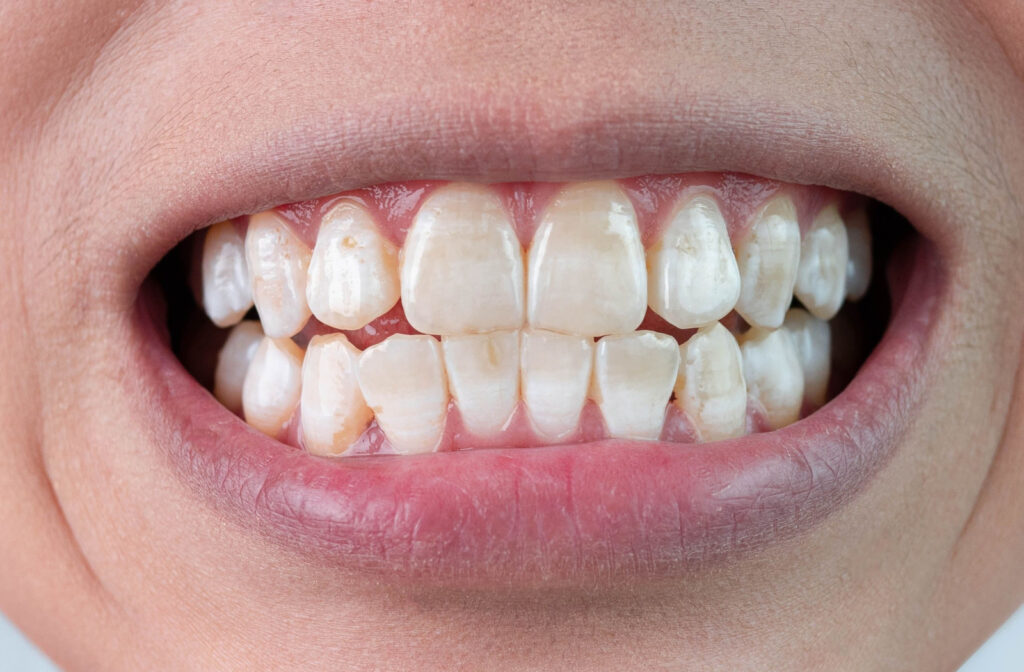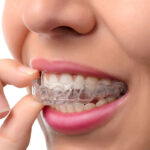Intro:
Parents often notice small white spots on their child’s teeth and wonder what they mean. These spots may seem harmless, but they could be early signs of tooth enamel issues or other concerns. A trained pediatric dentist in Denver can diagnose the cause and recommend the right dental treatment. Early care makes a big difference in a child’s smile and long-term kids dental care success.
What Are White Spots on Teeth?
White spots are small, pale marks that appear on the surface of teeth. They can form on baby teeth or permanent teeth. These spots are often the first sign of tooth enamel issues, where the outer layer of the tooth is weakened.
Many parents think these marks are just cosmetic, but they may also point to early decay, fluorosis, or poor brushing habits.
Common Causes of White Spots
There are several reasons white spots may appear on children’s teeth:
1. Fluorosis
Fluorosis happens when a child takes in too much fluoride while their teeth are still forming. This often leads to chalky white marks. It’s usually caused by swallowing toothpaste or taking high-fluoride supplements.
2. Early Tooth Decay
Tooth discoloration or white patches near the gums may signal early decay. This often happens when plaque builds up and weakens the enamel.
3. Mineral Imbalance
A lack of calcium or other minerals can affect enamel strength and cause tooth stains and spots.
4. Enamel Hypoplasia
This is a condition where enamel doesn’t develop properly, leading to pits, lines, or spots. It can be caused by illness, malnutrition, or premature birth.
How a Pediatric Dentist in Denver Can Help
A pediatric dentist in Denver can examine your child’s teeth and find the cause of tooth discoloration. Based on the findings, they may suggest one or more dental treatments to restore the appearance and health of the teeth.
Treatment Options for White Spots
1. Fluoride Treatments
These help strengthen weak enamel and prevent further damage. While fluorosis is caused by excess fluoride, controlled treatment can help manage early decay.
2. Microabrasion
A gentle sanding process removes a thin layer of enamel. This can reduce the look of mild tooth stains or surface white spots.
3. Remineralization Therapy
Special pastes or gels rich in calcium and phosphate may be used to rebuild enamel and fade spots caused by tooth enamel issues.
4. Tooth-Colored Fillings or Bonding
For deeper spots or decay, the dentist may use fillings or bonding to cover and protect the tooth.
How to Prevent White Spots on Kids’ Teeth
Good habits at home and regular check-ups are key to strong teeth and spot-free smiles.
- Use the right amount of fluoride: For kids under age 3, a smear of toothpaste is enough. From ages 3–6, use a pea-sized amount.
- Watch brushing habits: Teach children to spit, not swallow, toothpaste.
- Brush and floss twice a day: This removes food and plaque that can lead to tooth discoloration and decay.
- Limit sugary snacks and drinks: These feed bacteria that cause decay and tooth stains.
- Visit the dentist regularly: Routine exams help track kids dental care progress and spot problems early.
Conclusion
White spots on children’s teeth can be early signs of enamel trouble or too much fluoride. Whether they come from fluorosis, poor brushing, or weak enamel, a pediatric dentist in Denver can help. With the right dental treatment, these marks can be managed or removed.
Good home care, smart use of fluoride, and regular dental visits are all part of strong kids dental care. Helping children form healthy habits early can lead to a lifetime of confident, stain-free smiles. For expert care and gentle solutions, Kids Mile High Pediatric Dentistry offers trusted support for families looking to protect their child’s smile and treat tooth enamel issues effectively.
FAQs
Q1: Are white spots permanent?
Some white spots may fade with treatment, while others may need dental procedures to improve their appearance.
Q2: Can whitening toothpaste remove these spots?
Whitening toothpaste won’t help and may make tooth discoloration worse by highlighting the contrast.
Q3: Is fluoride safe for kids?
Yes, in the right amount. Too much fluoride can lead to fluorosis, so always monitor toothpaste use.
Q4: Can diet affect enamel health?
Yes. Poor nutrition can lead to tooth enamel issues. A diet rich in calcium and low in sugar supports strong teeth.
Q5: Should white spots be treated right away?
Early dental treatment helps prevent further decay and improves your child’s smile. Always consult a pediatric dentist.






